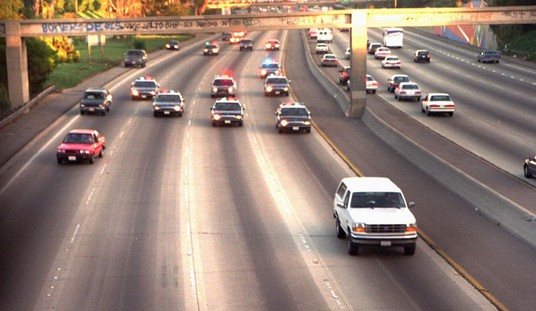
National Guard Soldiers arrive at Barrio Obrero in Santurce to distribute water and food among those affected by the passage of Hurricane Maria, in San Juan, Puerto Rico, Sunday, Sept. 24, 2017. Federal aid is racing to stem a growing humanitarian crisis in towns left without fresh water, fuel, electricity or phone service by the hurricane. (AP Photo/Carlos Giusti)
Unlike what has been insinuated on these pages, you don’t need to be a racist to realize that Puerto Rico had a deeply corrupt, incompetent, and bankrupt political system before Hurricane Maria struck. The storm did not make that better.
Puerto Rico’s power grid, run by the government-owned Puerto Rico Electric Power Authority , was in horrible shape for years before the storm:
As recently as 2016, the island suffered a three-day, island-wide blackout as a result of a fire. A private energy consultant noted then that the Puerto Rico Electric Power Authority “appears to be running on fumes, and … desperately requires an infusion of capital — monetary, human and intellectual — to restore a functional utility.”
…
As of 2014 the government-owned company was $9 billion in debt, and in July, it filed for bankruptcy under the provisions set by the Puerto Rico Oversight, Management, and Economic Stability Act, a law signed by President Obama in 2016.
Problems accumulated. Cutbacks in tree pruning left the 16,000 miles of primary power lines spread across the island vulnerable. Inspections, maintenance and repairs were scaled back. Up to 30% of the utility’s employees retired or migrated to the U.S. mainland, analysts said, and the utility had trouble hiring experienced employees to replace them.
The neglect led to massive and chronic failures at the Aguirre and Palo Seco power plants. The three-day blackout in September 2016 underscored how fragile the system was, and that the company was “unable to cope with this first contingency,” the Synapse Energy report said.
And I have a news flash for all those folks clamoring for US troops to come to Puerto Rico to restore power. There are a handful of military people who have the skills necessary to repair transmission lines. That job is going to have to be done by PREPA or by trained line crews flown in from the mainland.
Contrary to the line being offered in the media, there is no shortage of supplies of any kind in Puerto Rico. The problem is that without longshoremen to unload ships and truck drivers to move cargo, the supplies are stuck where they are.
Around 9,500 containers carrying supplies remained stuck at the Port of San Juan on Thursday, while the island’s 3.4 million residents faced another day of food, fuel and water shortages, waiting in hours-long lines to buy basic items.
…
“When we say that we don’t have truck drivers, we mean that we have not been able to contact them,” [Gov. Ricardo] Rosselló said.
Some of this, arguably, is out of the hands of the current government in Puerto Rico. But the fact is that government is howling for outside resources when it hasn’t even bothered to try to utilize one of its own critical assets, the Puerto Rico National Guard: Maria hit 9 days ago. Less than half of the Puerto Rico National Guard is on duty. As you will see, the operative phrase is “less than half.”
The struggle to activate National Guard troops comes as Puerto Rico grapples with devastation that U.S. officials have, repeatedly, called unprecedented while defending the federal government’s response. A growing number of critics have questioned why more U.S. forces were not deployed sooner. The storm cut a 60-mile wide swath across the island with Category-4 strength, knocking out the electrical grid and leaving people desperate for food, clean water and medical care.
Of the Puerto Rico Guard’s 8,000 members, some 2,750 are activated [my italics], said Kurt Rauschenberg, a National Guard Bureau spokesman. That number is growing by the day, but it illustrates a crucial difference in how states and territories responded to hurricanes this year.
In Florida, Gov. Rick Scott (R) activated all 7,000 members of the Florida National Guard before Hurricane Irma pummeled the state. In Texas, all 12,000 members were activated within two days of Hurricane Harvey coming ashore with Category-4 strength.
Someone needs to ask why, with a Cat 5 hurricane bearing down on the island, the National Guard was not activated before the storm hit. Someone needs to ask why soldiers from the PRNG are being allowed, according to the story, to stay home and care to their families instead of performing their duty. Someone needs to ask why some 5,000 active duty soldiers have been sent to Puerto Rico while 5,000 members of the Puerto Rico National Guard have not reported for duty.














Join the conversation as a VIP Member